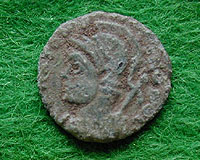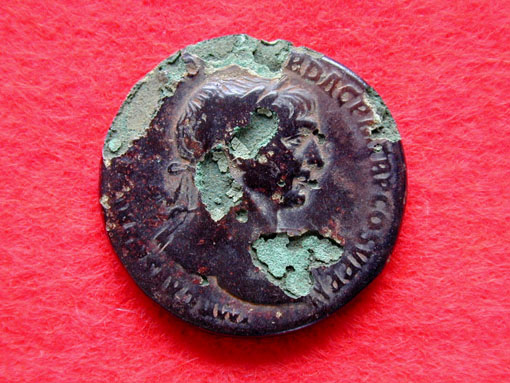Finds in archaeology
What is an archaeological artefact?
An 'artefact' is anything made by human hands. The simplest modification to a natural object, such as sharpening a stick to make a tool or striking a flint to make a cutting edge can result in an artefact. Archaeological artefacts therefore include the earliest tools to the most sophisticated objects manufactured today. Even something discarded yesterday has potential to contribute to the archaeological record.
The exceptions to this are so-called 'ecofacts', which are natural objects used by humans, including animal bones, shells and plant macrofossils, and even our own skeletons.
In general terms, however, when we refer to archaeological artefacts, we are talking about objects found during archaeological fieldwork, or stray objects found by archaeologists or by the public.
What can we learn from finds?
The objects which people made and used have the potential to provide us with many clues about daily life in the past. Some of the general ways in which finds can help us reconstruct a site are:
- to provide an estimate of date for the site, or the archaeological context in which the object was found;
- to provide evidence for technology by studying methods of manufacture;
- to indicate patterns of trade if the object was not manufactured locally;
- to suggest the relative status of the site's occupants;
- to reconstruct belief systems and burial practices.

Some finds can provide more specific clues. For example, metal jewellery and fasteners found in situ on the skeletons of the dead can provide clues to clothing, and textile remains preserved in the corrosion products of these items can suggest the types of cloth which were used. Coins can give very precise dates, but are also useful in providing portraits which can add to our knowledge of dress (e.g. the helmet shown on this Roman coin), evidence for trade and economy, and technological information, amongst other things.
Archaeological materials

Not everything which was made and used in the past has survived. If it had, we would be knee deep in the detritus and rubbish of past populations. Different burial conditions will result in different preservation of certain types of artefacts. Some material, such as stone and pottery, will survive in almost all conditions. It is the organic remains — paper, wood, leather, textiles, horn — which are likely to disappear from most sites, but sometimes even these can be preserved in very waterlogged or dry conditions. Bone is also at risk, particularly in acidic soils such as sand and gravel, where it will be reduced to nothing more than a stain in the soil. Many metals are easily corroded, but metal objects will often survive inside a thick layer of corrosion.
On the average British site, we would expect the finds assemblage to consist of pottery and other ceramics, bone, flint, stone, metals, and glass.
Some common finds
The most common artefacts on most sites from the Roman period onwards are pottery, ceramic building materials (CBM) and animal bone. Prehistoric sites produce large quantities of flint or other stone tools, and may also contain large quantities of pottery (from the Neolithic period onwards) and animal bone.
Pottery and CBM are covered in a separate section of Spoilheap: see Pottery and other ceramics.
Bibliography
Adkins, L. and Adkins, R., 1982, A Thesaurus of British Archaeology, David and Charles, London.
Deetz, J., 1996, In Small Things Forgotten. An archaeology of Early American Life, Anchor Books (revised edition of 1977 work).
Hodges, H., 1964, Artifacts. An introduction to early materials and technology, John Baker, London.
Noël Hume, Ivor, 1991, A Guide to Artifacts of Colonial America, First Vintage Books, New York (reprint of 1970 book).
Pearce, S.M., 1992, Museums, Objects and Collections. A Cultural Study, Leicester University Press.